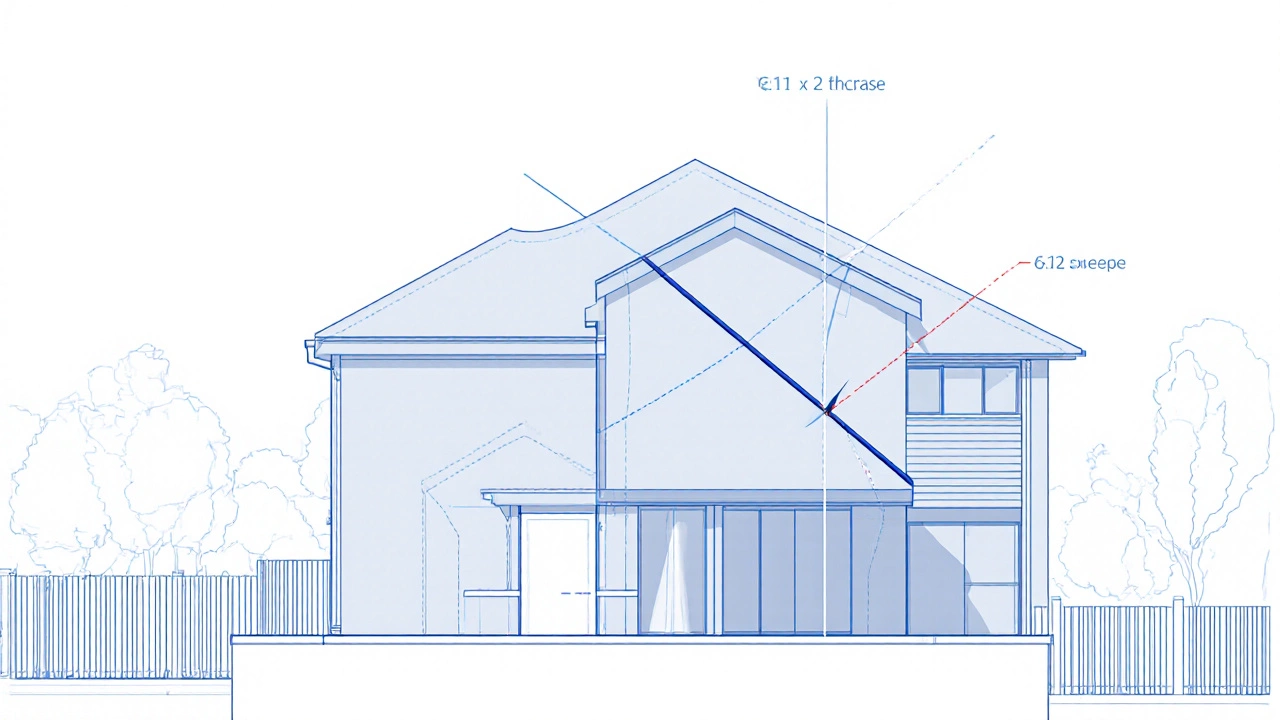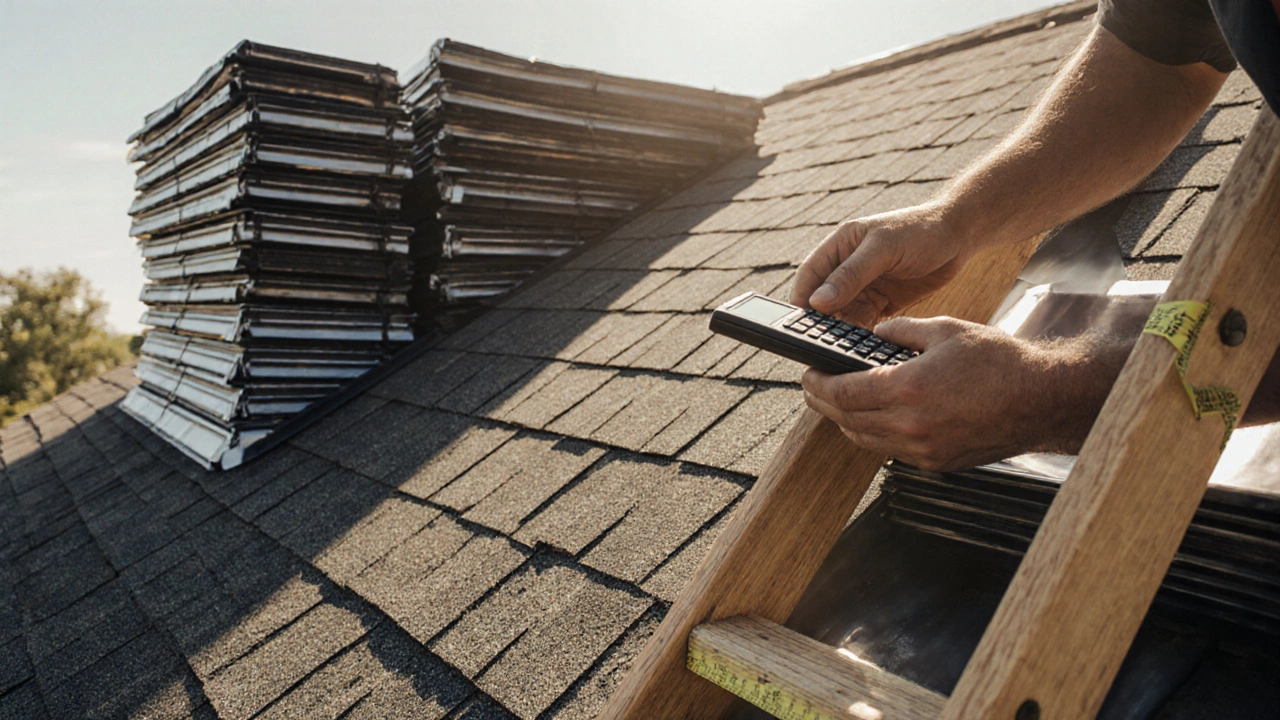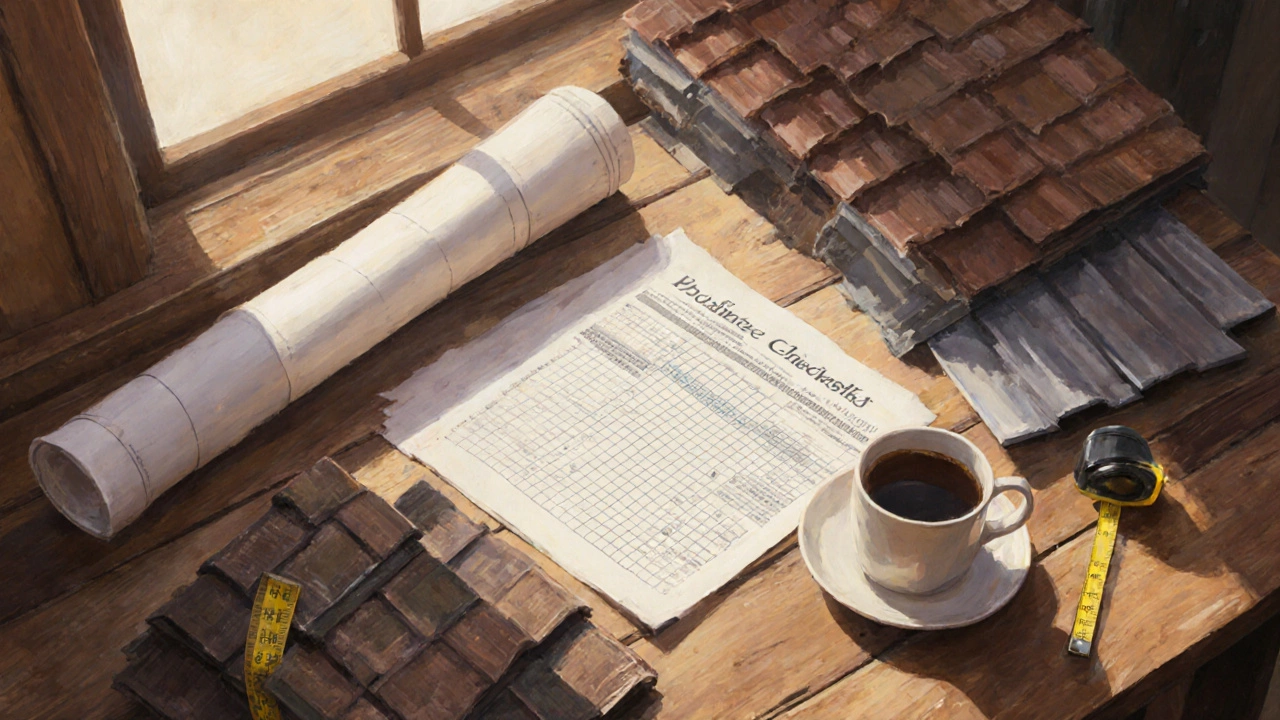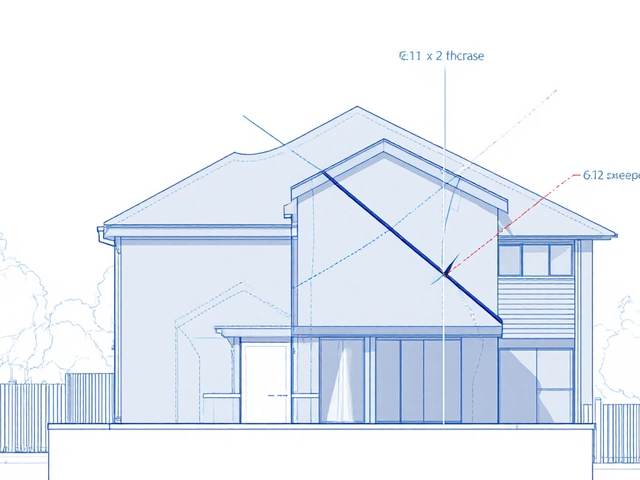Roofing Material Calculator for a 2000sqft Home

Roofing Material Calculator for a 2000 sq ft Home
Enter parameters and click "Calculate Roofing Material" to see results.
When you start planning a new roof, the first question is always how much material you actually need. It’s tempting to guess based on the house’s square footage, but the real answer depends on the roof pitch the steepness of the roof, usually expressed as a ratio like 4:12, the type of roofing material such as asphalt shingles, metal panels, or clay tiles, and the waste factor you’ll apply for cuts and overlaps. This guide walks you through a simple, repeatable process to answer the exact question: "How much roofing do I need for a 2000sqft house?"
Key Takeaways
- Calculate the actual roof surface by adjusting the floor area for the roof pitch.
- Use the material’s coverage per bundle (or square) and add a 10‑15% waste factor.
- Round up to the nearest whole bundle to avoid short‑changing yourself.
- Different materials have different waste rates; metal panels need less than shingles.
- Keep a quick checklist handy to verify measurements before ordering.
Understanding Roof Area vs. House Footprint
The 2000sqft number you see in a listing is the floor area the horizontal projection of the house. A roof, however, is a three‑dimensional surface that expands as the slope increases. To convert floor area to roof area, you use the formula:
Roof Area = Floor Area × (Pitch Factor)
The pitch factor comes from the roof’s rise‑over‑run ratio. For a 4:12 pitch (4 inches rise per 12 inches run), the factor is about 1.054. A steeper 8:12 pitch yields a factor around 1.215. This adjustment captures the extra surface that the shingles have to cover.
How Pitch Affects the Calculation
Let’s break down the math. First, find the pitch angle:
Angle (degrees) = arctan(rise/run)
Then, calculate the factor:
Factor = 1 / cos(angle)
For most residential roofs, the factor falls between 1.05 and 1.25. If you don’t have a pitch meter, you can estimate by counting the number of “ridges” per 12‑inch run on a roof diagram or by asking your contractor.

Material Coverage and Waste Factor
Every roofing product lists a coverage figure. Asphalt shingles, for example, are sold in bundles usually covering 33sqft each. Metal panels might be sold by the square foot, while clay tiles are measured in “squares” (100sqft). The waste factor accounts for:
- Cutting around chimneys, vents, and edges.
- Overlap required by the manufacturer.
- Breakage or defective pieces.
Industry practice suggests adding 10% for metal, 12% for wood shakes, and 15% for asphalt shingles. The higher the overlap, the higher the waste.
Step‑by‑Step Quantity Calculation
- Measure or confirm the floor area. In this case, 2000sqft.
- Determine the roof pitch. Example: 6:12 pitch (6‑inch rise per 12‑inch run).
- Calculate the pitch factor. Angle ≈ 26.6°, factor = 1 / cos(26.6°) ≈ 1.12.
- Find the adjusted roof area. 2000sqft × 1.12 = 2240sqft.
- Select your roofing material. Say you choose asphalt shingles (33sqft per bundle).
- Compute base bundles. 2240sqft ÷ 33sqft ≈ 67.9 bundles → round up to 68.
- Add waste factor. 68 bundles × 1.15 (15% waste) = 78.2 bundles → round up to 79 bundles.
- Order the total. Purchase 79 bundles to safely cover the roof.
That’s the whole process in a nutshell. If you’re using metal panels that cover 12sqft per panel, replace the bundle math with the panel coverage and apply a 10% waste factor instead.
Example: 2000sqft House with a 6:12 Pitch
Putting the numbers together:
- Floor area: 2000sqft
- Pitch factor (6:12): 1.12
- Adjusted roof area: 2240sqft
- Asphalt shingle coverage: 33sqft per bundle
- Base bundles needed: 68
- Waste factor (15%): 79 bundles total
Most contractors will suggest ordering a few extra bundles as a safety net, especially if you have multiple dormers or valleys.

Choosing Material & Cost Implications
| Material | Typical Coverage | Recommended Waste % | Average Cost per Sqft (USD) |
|---|---|---|---|
| Asphalt Shingles | 33sqft per bundle | 15% | $1.10-$1.50 |
| Metal Panels | 12sqft per panel | 10% | $3.00-$5.00 |
| Clay Tiles | 100sqft per square | 12% | $7.00-$10.00 |
Even though metal looks pricier per square foot, the lower waste factor and longer lifespan often make it cheaper over a 30‑year horizon. Asphalt shingles stay popular because they’re easy to install and the upfront cost is low, but expect higher waste and more frequent replacement.
Common Mistakes to Avoid
- Ignoring pitch. Using the floor area alone can under‑order material by up to 25% on steep roofs.
- Skipping the waste factor. Cutting around vent pipes and skylights adds up quickly.
- Relying on rough estimates. Always round up, never down.
- Forgetting local building codes. Some jurisdictions require a minimum overlap that changes the waste calculation.
When in doubt, pull out a roofing calculator a simple spreadsheet or online tool that automates the math. It’s a small investment compared to the cost of a delayed project.
Quick Checklist Before Ordering
- Verify floor area (2000sqft) from the original plans.
- Confirm roof pitch and calculate the factor.
- Select the material and note its coverage per unit.
- Apply the appropriate waste percentage.
- Round up to the nearest whole bundle/panel.
- Order 5-10% extra for emergencies.
- Check local code for required overlaps.
Frequently Asked Questions
Do I need to measure the roof myself?
You can measure the roof’s length and width if the design is simple, but a professional roofer’s measurement is more reliable, especially for complex layouts with multiple valleys or dormers.
How much extra material should I order?
Add 10% for metal, 12% for wood shakes, and 15% for asphalt shingles. Then round up to the next whole bundle or panel. Many contractors suggest ordering an additional 5-10% as a safety net.
Can I use the same calculation for a flat roof?
Flat roofs have a pitch factor close to 1.0, so you can often use the floor area directly. However, you still need a waste factor for seams and edge trims.
What if my house has multiple roof sections?
Measure each section separately, apply the pitch factor for each, then add the results together before applying the waste factor. This prevents under‑ordering on complex roofs.
Is there a difference between "square" and "bundle"?
A "square" equals 100sqft and is often used for metal or tile pricing. A "bundle" refers to a packaged set of shingles that typically covers about 33sqft. Always check the manufacturer’s specs.
